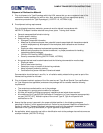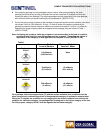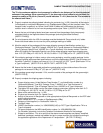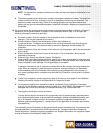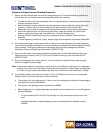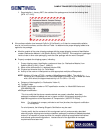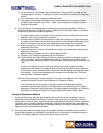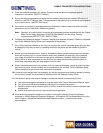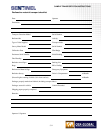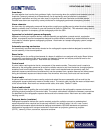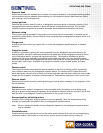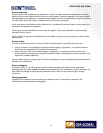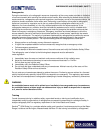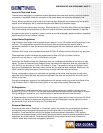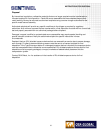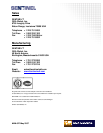
EMERGENCIES AND PERSONNEL SAFETY
7.1
Emergencies
During the termination of a radiographic exposure, observation of the survey meter provides an indication
of source movement while cranking the remote control handle. After retracting the sealed source into the
exposure device, radiographers are required to perform a confirmatory survey of the exposure device, the
projection sheaths and beam limiter when used. Performing a confirmatory survey after a radiographic
exposure is required by regulation and is the only method that the radiographer should rely on to
determine if a source assembly is in the fully shielded position within the exposure device. If the
radiographer measures any radiation level that indicates the sealed source is not fully shielded while
performing the confirmatory survey, the radiographer must first recognize that problem exists and then
follow his company’s emergency procedures. Emergency conditions are those problems in which the
source assembly cannot be returned to the shielded position by normal means, specifically the remote
control crank mechanism. The majority of problems experienced by radiographers are where the source
assembly becomes disconnected or when the source assembly becomes jammed in the projection
sheath while in an exposed position. The important safety points for radiographers to follow are:
• Always perform a confirmatory survey after each exposure.
• If higher than expected radiation levels are measured, recognize that an emergency exists.
• Follow emergency procedures.
• Do not attempt to retrieve the sealed source. Secure the area and notify the Radiation Safety Officer.
The radiography crew is limited to the following basic steps and must be adhered to
under regulation:
1 Immediately leave the area and maintain continuous surveillance of high radiation area.
2 Adjust the restricted area boundary to ensure the measured dose/rate is < 2 mR/hr.
Do not allow anyone into the area.
3 Immediately notify the Radiation Safety Officer.
4 Do not leave the area unattended under any circumstances. Maintain security of the area until the
Radiation Safety Officer arrives at the site.
Do not under any circumstances attempt to retrieve the source. Performing source retrieval is a licensed
activity that allows only specially trained RSOs to respond to an emergency. This regulatory requirement
is the result of overexposures to radiographers attempting to handle emergency retrievals by themselves.
WARNING:
An unshielded source must not be picked up or handled at close range under any circumstances.
An unshielded source at close range can cause serious injury or death to anyone who is exposed
to it, even for a short duration of time.
Training
Formal classroom training in radiation safety, supervised hands-on training and certification by an
independent certifying organization of radiographers are essential components for radiological safety in
isotope radiography and is a regulatory requirement in the United States and Canada.
Sentinel
TM
, QSA Global, Inc. provides radiation safety and inspection & maintenance training at the Baton
Rouge, Louisiana and Burlington, Massachusetts facilities. On-site training is available by arrangement.



